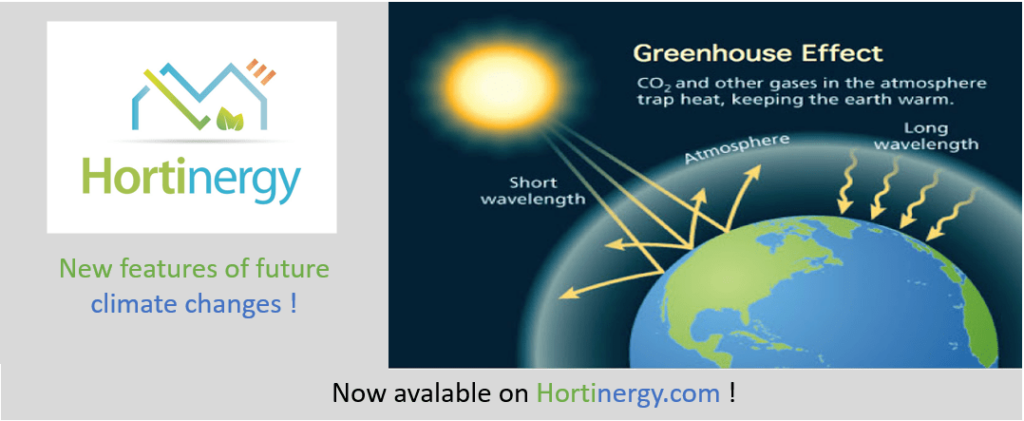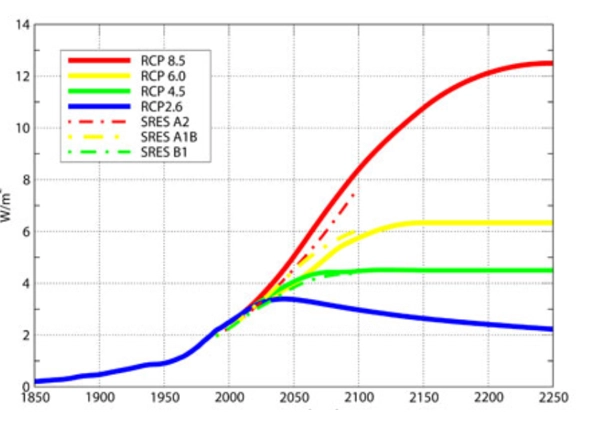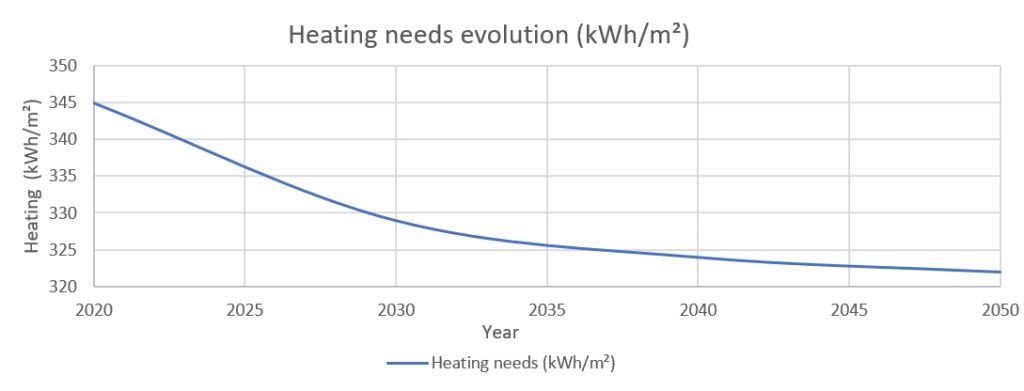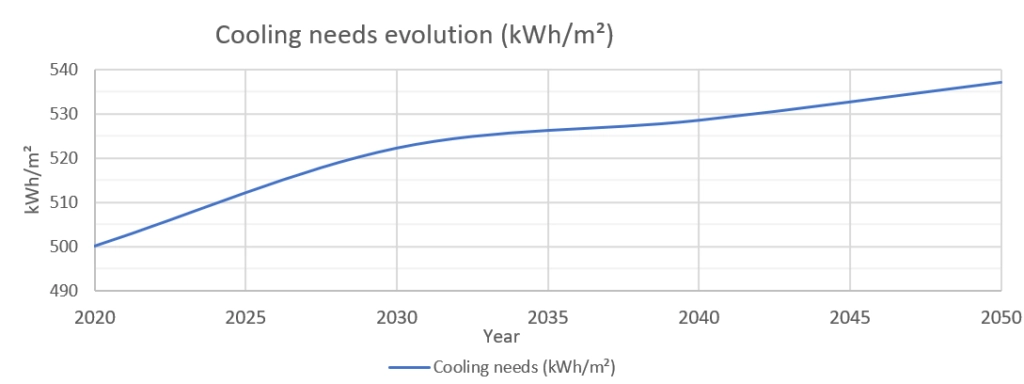Greenhouse Climate Prediction for Horticultural Projects
With Hortinergy, you can simulate screens, semi-closed greenhouse, closed greenhouse, energy consumption, sustainability, cannabis greenhouse , supplemental lighting, and calculate carbon tax rebate. We provide also trainings on energy consumption to be a greenhouse designer.
You can now use Greenhouse Climate Prediction to simulate the indoor climate and energy consumption of your greenhouse project for the years 2030, 2040, 2050, and even 2100, anywhere in the world.
As climate change progresses, managing greenhouse environments becomes more complex. During the summer, cooling needs increase while heating demands decrease. These shifts are expected to intensify in the coming years. Since a greenhouse is typically a long-term investment over 20 to 30 years, using accurate Greenhouse Climate Prediction is essential to make reliable design decisions.
The new Greenhouse Climate Prediction module from Hortinergy, developed with Meteonorm, allows users to simulate future climate conditions using official IPCC scenarios such as RCP 2.6, 4.5, and 8.0. You can evaluate how changes in temperature, humidity, solar radiation, and wind will impact your greenhouse’s internal environment and energy use.
With Greenhouse Climate Prediction, you can assess how your greenhouse will perform under different future scenarios. It helps you compare equipment options like screens, cooling systems, and lighting, ensuring you select solutions that will remain effective and energy-efficient as climate conditions evolve.
Using Greenhouse Climate Prediction during the planning phase gives you a strategic advantage. You can design a greenhouse that is not only cost-effective and sustainable today but also resilient to the climate conditions of tomorrow.

1- Greenhouse Climate Prediction using a Climate Change Model
To analyse the future of climate change, IPCC experts have defined greenhouse gas emission and concentration pathways known as Representative Concentration Pathways (RCPs).
These paths have been translated into terms of radiative forcing, that mean changes in the planet’s radiative balance. The radiation balance represents the difference between the solar radiation received and the infrared radiation re-emitted by the planet. They are identified by a number, expressed in W/m² (power per unit area), which indicates the value of the forcing under consideration.
The new version of Hortinergy developed with Meteonorm integrates 3 RCP scenarios:
– RCP 2.6: forcing of +2.6 W/m2
– RCP 4.5: forcing of +4.5 W/m2
– RCP 8: forcing of + 8.0 W/m2
Evolution of the earth’s radiative balance or radiative forcing in W/m² over the period 1850-2250 according to the different scenarios :

For more informations : reprensentative concentration pathway’s
2-Greenhouse Climate Prediction Case Study in Orléans, France
We will study the effects of climate change with the following project as an example:
– In France at Orleans
– Greenhouse of 1 ha type venlo with a screen
– Heating needs for tomato production with semi-closed greenhouse
– Cooling needs for cannabis greenhouse production with closed greenhouse
3- Outdoor Climate Evolution for Greenhouse Climate Prediction
Hortinergy generates weather files for a typical year on an hourly bases using Meteonorm: temperature, humidity, solar radiation, wind speed and direction, PAR …
We show below some tables on the evolution of temperatures according to the IPCC PCR 4.5 scenario, the median scenario :
– Average monthly temperature
– Minimum monthly temperature
– Maximum monthly temperature

The maximum temperature is more impacted (1.5°C) than the minimum temperature (0.88°C), due to an increase in heat waves.
Winter heating consumption will fall slightly, but climate control will be more complex in summer.
4- Evolution of Heating Needs in Greenhouse Climate Prediction
Heating needs have been estimated for :
– Tomato production from 5th december to 5th november
– In a semi-closed greenhouse with thermal screen
– With the heating settings :
o Temperature: day 20°C, night : 18°C
o Relative humidity: < 90%, day and night
The evolution of heating needs is presented in the table and graph below.

Heating needs will fall by 5% this decade and then by 1% per decade.

5- Evolution of Cooling Needs in Greenhouse Climate Prediction
Cooling needs have been estimated for :
– Production of cannabis greenhouse mother plants
– In a closed greenhouse with shade screen
– With cooling settings :
o Temperature: day 28°C, night: 22°C
o Relative humidity: < 60 %, day and night
The evolution of cooling needs is presented in the table and graph below.

Cooling needs will increase by 4% this decade and then by 1% to 2% per decade.

6- Conclusion on Greenhouse Climate Prediction Insights
Hortinergy allows you to simulate the indoor climate and energy consumption of your greenhouse project in 2030, 2040 and 2050 all over the world.
With climate change, climate control is more difficult in summer, with slightly lower heating in winter and higher cooling consumption in summer. Controlling the summer climate will require investment in shading systems (screen, paint) and cooling systems (semi-closed, pad, fog…).
The situation is going to increase in the forthcoming years, while a greenhouse project is an investment over 20 to 30 years.
So when you design your greenhouse project, it may be relevant to include the future climate and its changes to make sure you make the right decision.
Hortinergy is an online software. You can choose your offer, create an account and start your project.
